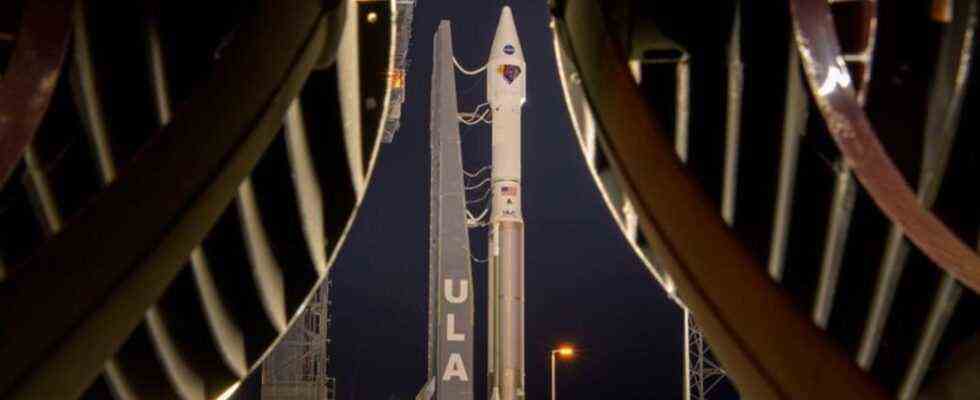Space travel
NASA probe “Lucy” flies to the Jupiter asteroids
United Launch Alliance’s Atlas V rocket with the Lucy spacecraft on board at the Cape Canaveral spaceport in Florida. Photo: Bill Ingalls / NASA via AP / dpa
© dpa-infocom GmbH
The so-called Jupiter Trojans are asteroids that orbit the sun in the same orbit as the planet. Now, with «Lucy», a NASA probe is to go there for the first time – and there are other premieres.
The name comes from a Beatles song and the new spacecraft shares it with a world-famous fossil. In 1974, the team of the American paleoanthropologist Donald Johanson came across parts of the skeleton of a pre-human female in the Ethiopian Afar Triangle and named it “Lucy”.
The discovery proved for the first time that today’s human predecessors could walk upright around three million years ago. Because the Beatles song “Lucy in the sky with diamonds” was supposedly booming from a tape recorder when the researchers found the bones, the fossil got its nickname – and a probe from the US space agency NASA was named after this find this Saturday for the first time to set off to the asteroids of the planet Jupiter.
«Just like the” Lucy “fossil provided unique insights into human development, the” Lucy “mission promises to revolutionize our knowledge of the formation of planets and the solar system,” says NASA. The asteroids of Jupiter, the so-called Jupiter Trojans, which “Lucy” is supposed to visit, are “the fossils of the formation of the planets,” said NASA scientist Hal Levison.
The Jupiter Trojans, discovered several decades ago, orbit the sun in the same orbit as the planet – a swarm rushes ahead of it, one follows it. Scientists originally thought that only Jupiter had Trojans, but they have now also been discovered in other celestial bodies. It is not yet clear how many Trojans Jupiter has in total – several thousand have already been discovered.
During its twelve-year mission, “Lucy” will be the first probe in the history of space travel to fly close past seven of them: Eurybates, Queta, Polymele, Leucus, Orus, Patroclus and Menoetius – all named after protagonists from the ancient legend “Iliad” by Homer. In addition, «Lucy» is also to fly close to an asteroid in the so-called main belt between the orbits of Mars and Jupiter and – also as the first probe in the history of space travel – to return three times to the vicinity of the earth in order to support gravity for to pick up their trajectory. The first asteroid flyby is scheduled for 2025, with the others scheduled for between 2027 and 2033. In total, “Lucy” is expected to cover around 6.5 billion kilometers.
“With” Lucy “we fly with a single spaceship to eight asteroids that have never been examined before in twelve years,” said NASA scientist Tom Statler. “This gives us a fantastic opportunity to make discoveries while looking into the deep past of our solar system.”
The probe is more than 14 meters long – mainly because of its huge solar cells that are used to charge the batteries. In addition, “Lucy” also has around 725 kilograms of fuel on board. At the launch from the Cape Canaveral spaceport, the probe is packed in a kind of capsule that is supposed to enclose it like a conch shell. “Starting a spaceship is almost like sending a kid to college,” said NASA researcher Levison. “You did what you could to get ready for the next big step that you have to take on your own.”

